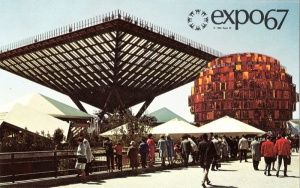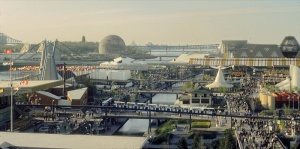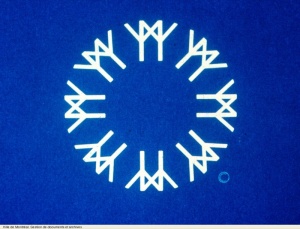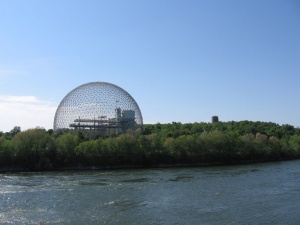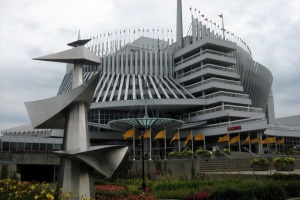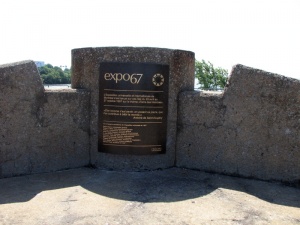Expo 67 in Montreal, a Landmark Event
par Tran, Van Troi
Between April 27 and October 29, 1967, over 50 million visitors passed through the gates of Expo 67 to attend what would prove to be one of the largest world's fairs in history. Even today, evidence that Expo 67 was a major event can be found both in the cityscape of Montreal and in the collective memory of contemporary Quebec. This crowning event in Canada's centennial celebrations brought together 62 participating nations, international organizations, large Canadian companies and other groups, under the theme "Man and His World". It opened Quebec to the world. It also led to the development of expertise that is now one of the distinguishing features of Montreal and of the Province of Quebec, which have come to be recognized for their ability to organize festivals and avant-garde museum exhibitions. A cultural circuit and various commemorative events have helped keep the memory of this extraordinary event alive.
Article disponible en français : Expo 67 de Montréal, un évènement marquant
Montréal, 1967
A journalist of the day, writing for the Figaro newspaper, described Expo 67 as the "hugest fair of all time NOTE 1". The contagious enthusiasm that affects many people who experience a world's fair of any kind inevitably causes them to use superlatives in describing the event. However, in the case of Expo 67, the above comment does not appear to have been an exaggeration. As Montreal, Quebec, and Canada played host to the world over the six months of festivities associated with this major event, their image was transformed. In terms of numbers, 50,306,648 paid entries were recorded, the majority of them (45%) from the United States; such attendance figures had not been seen at a world's fair since the Paris World's Fair in 1900.
The 253-hectare site, created by extending Île Sainte-Hélène and building Île Notre-Dame, was divided into four sectors: 1) the entrance at the Cité du Havre, linked to the islands by the Concordia Bridge, where the administrative buildings and Habitat 67 were located; 2) the southwest end of Île Sainte-Hélène; 3) the amusement park, La Ronde, on the north end of Île Sainte-Hélène; and 4) Île Notre-Dame, on which most of the national pavilions were found. Sixty-two countries participated in the event, including a few African countries that had recently gained their independence. There were also provincial and thematic pavilions (Telephone, Kaleidoscope, Air Canada, Canadian National, Man and Life Pavilion, etc.).
In qualitative terms, the socio-cultural and the political effects of Expo were considerable. Coinciding with the Quiet Revolution, then in full force, this extraordinary event marked the modernization of the country and the emergence of new democratic values, as well as the growth of a renewed sense of national pride. Like all world's fairs, Expo 67 attracted international attention, both from the crowds of tourists who energized the city and from visiting dignitaries. Arts, culture, music, gastronomy and everyday life were all affected in one way or another by the event that changed the way that a large number of people viewed, listened to and experienced the world. The fair also left lasting marks on the cityscape of Montreal, testaments to the project's magnitude and its central role in the modernization of the city.
Man and His World
The idea of holding a world's fair in Montreal for the centennial of Canadian confederation emerged in the 1950s. The first public proposal, initiated by Senator Mark Drouin and the Mayor of Montreal of the day, Sarto Fournier, was made in 1958, during the Brussels World's Fair. A bid was submitted to the Bureau International des Expositions (BIE) (International Exhibitions Bureau) in March 1960, but it was rejected in May 1960 in favour of a proposal from Moscow. When the Soviet delegation withdrew in April 1962, this opened the way once again for Montreal, whose proposal was presented this time by its new mayor, Jean Drapeau. The BIE sanctioned the Montreal bid in May 1962.
The Île Sainte-Hélène and Île Notre-Dame site was developed over a period of less than 5 years, at a cost of more than 400 million dollars, using earth and rock taken from bottom of the St. Lawrence River and landfill brought from excavations for the construction of the Montreal metro. No fewer than 847 buildings were erected on the site and 12,000 trees were planted. The Expo Express, a 5.75 kilometre railway line, was built to transport people quickly from one area to another, as well as the Minirail, an elevated monorail system on which they could visit a portion of the site.
The theme of the exhibition, "Man and His World", was chosen at a 1963 meeting of Canadian intellectuals (writers, artists, politicians, professors), including author Gabrielle Roy, at Montebello. In an era of international tension, with the Cold War and the Vietnam War still raging, there was a desire to reaffirm the ideal of human solidarity. In the words of the General Commissioner of Expo 67, Pierre Dupuy: "The world is on the road to unity." [Translation] This optimism matched the sense of hope being generated at the time by the major peace and social justice movements of the 1960s. The 1967 fair's expression of renewed faith in the universal progress of Man carried on the tradition of earlier fairs, which had, since the mid-19th century, predicted a promising future for humanity based on technological advances. However, each fair articulates a particular vision of the future in keeping with its time. For this reason, although technology would occupy an important place in many national pavilions, there was never any thought that the Montreal fair would be organized as a friendly competition among nations presenting new industrial products, as had been the case in the second half of the 19th century. Rather, in 1967, the way of the future was the way of peace, understanding, and human solidarity, symbolized in the Expo logo designed by Montreal artist Julien Hébert. The logo image represents the friendship of men around the planet NOTE 2, a planet that had only recently been photographed for the first time, in all its splendour, from outer space. The overall theme of the fair was divided into five sub-themes: "Man the Explorer", focusing on scientific research; "Man the Producer", presenting the latest inventions; "Man in the Community", illustrating the pressures created by increasing urbanization; "Man the Provider", demonstrating the food supply challenges caused by overpopulation; and finally, "Man the Creator", paying homage to artistic creation.
Impact of an Event
It is impossible to measure or to quantify in exact terms the impact of an event such as this. Expo 67 left a lasting impression on the consciousness of all those who experienced it; it transformed the built environment of Montreal; it provided a name for the City of Montreal's major league baseball team, formed the following year. It played host to heads of state from around the world, including General de Gaulle, who used the occasion to make one of the most well-known declarations in the history of contemporary Quebec: "Vive le Québec libre!" The enduring marks of Expo 67, both tangible and intangible, including several events in 2007 commemorating its 40th anniversary, are evidence of its historical significance.
The most visible traces of the fair are in its
urbanistic and architectural legacy. Every world's fair provides an opportunity
for urban renewal, beginning with the transportation network. It is difficult
to separate cause from effect when it comes to the holding of a world's fair
and the modernization of the host city because, while hosting a world's fair
means that new urbanistic projects can be developed, the event really presents
an opportunity to complete ambitious projects that have already been initiated.
The first such project in Montreal was the redevelopment of the expressway
network (notably, the Décarie Expressway and the Louis-Hyppolyte-Lafontaine
Tunnel) and the rail network, along with the construction of several major
buildings such as Place Bonaventure, the Alexis Nihon Plaza and the Château
Champlain. Plans for a housing development in the south end of the city were
modified NOTE 3 and people
returned to the areas of the city along the river; Expo 67 served as the
catalyst in both instances. Pierre Dupuy highlighted this several years later:
"What impresses me most is that Montrealers, who had been separated from
the river for so long by the port facilities, returned to the St. Lawrence,
and, at the same time, they became reacquainted with their city as it
experienced a tremendous surge of well-ordered power [Translation] NOTE 4."
In architectural terms, world's fairs have left a number of important,
world-renowned, monuments such as the Eiffel Tower, the Grand and the Petit
Palais, Trocadero Palace and the Brussels Atomium. In Montreal, while some
architectural structures remain on the island site of Expo 67, on the periphery
of the city's traditional tourist circuits, three monuments located in the city
proper, Buckminster Fuller's geodesic dome (today the Biosphere), Moshe
Safdie's Habitat 67, classed as an historic monument in 2009, and the Casino de Montréal complex, made up of
the former French and Quebec pavilions, now occupy a central place in
Montreal's contemporary architectural history.
The fair also left a less visible legacy, which was commercial and organizational in nature. The event ended with a 221 million dollar deficit; however, this figure did not take into account the intense economic activity that Expo generated in various sectors of the tourist industry in Montreal, or the key role it played in the development of commercial, logistical, administrative and cultural expertise in Quebec. Each world's fair builds on the organizational experience of those that have preceded it; one of the principal roles of the BIE is to ensure this transfer of administrative expertise from one fair to the next. On the local level, Expo 67 helped expand the culture of festival and major event organization in the City of Montreal and it contributed to placing Quebec and Canada at the forefront in the world in the field of museology. The founder of the Musée de la civilisation de Québec, Roland Arpin, cited Expo 67 as one of his great sources of inspiration for exhibitions and the use of multimedia.
In more general terms, Expo 67 left its mark province-wide on the collective memory of the people of Quebec, by providing a spectacular symbol of the modernization of Quebec and by representing a certain collective energy that characterized the period known as the Quiet Revolution. Even now, Montreal Mayor Gérald Tremblay points to the event's central role in enabling Montreal to look outward to the world: "The 1967 world's fair gave Montreal a tremendous boost and the city was able to use this impetus to become part of the modern world and to have a greater presence on the international scene [Translation] NOTE 5."
The Future of a World's Fair Site
Once the euphoria of the celebrations has abated, the future of a world's fair site often becomes a thorny issue for the authorities, whose desire to conserve it and make it profitable often proves unrealistic. The cost of maintaining temporary pavilions erected on-site much like circus tents and not built to last, is generally too high for public administrations to assume. This explains why pavilions are usually demolished or sold and moved off-site. Three weeks before the end of the fair in Montreal, on October 9, 1967, Mayor Jean Drapeau announced that he wanted a permanent exhibition, "Man and His World", to continue at the site. Despite the support of the federal government and numerous participating countries, this initiative was not as successful as hoped and the exhibition closed its doors for good in 1981. However, other international events have helped keep Montreal's Parc des Îles (renamed Parc Jean-Drapeau in 2000) alive. For example, the Olympic Basin was excavated on Île Notre-Dame for the rowing and kayaking competitions at the 1976 Montreal Olympics. In 1978, a racetrack was built for the Formula One Canada Grand Prix. An international flower show, Les Floralies internationales de Montréal, was held in the central area of the island in 1980.
Today, in addition to the amusement park, La Ronde, which continues to operate successfully, seven national pavilions remain standing in Parc Jean-Drapeau and are part of a free cultural tour. Five of them are on Île Notre-Dame: the Canadian Pavilion, which now houses the offices of the Société du parc Jean-Drapeau; the French Pavilion, which was first converted to the Palais de la Civilisation, an exhibition centre, in 1985, and later, in 1993, combined with the Quebec Pavilion to become the Casino de Montréal; the Jamaican Pavilion that is available for event rentals; and the Tunisian Pavilion. Two are located on Île Sainte-Hélène: Buckminster Fuller's United States Pavilion, which became an environmental museum, the Biosphere, in 1995, and the Korean Pavilion, now only a wooden shell. The cultural tour presents numerous artworks created for Expo 67, including Alexander Calder's imposing sculpture, "Man", Jean leFébure's "Signe solaire" and the Kwakiutl Totem, created for the First Nations Pavilion by aboriginal artists, Tony and Henry Hunt. The site of the official ceremonies for Expo 67, Place des Nations, still exists on the southern tip of Île Sainte-Hélène. Although it is not in use, interpretive panels at the site explain its role.
The Return of World's Fairs in the 21st Century
World's fairs are destined to be ephemeral,
their physical traces fading into people's memories and souvenir collections.
However, in keeping with the times, world's fairs, with their high material
costs, have become virtual events and have found lasting new life on the
worldwide web. Expo 2010 Shanghai launched the first virtual world's fair NOTE 6 along with a
permanent museum of world's fairs. A huge project for the 3D reconstitution of
the 1900 Paris World's Fair has been underway in France for a number of years NOTE 7. Many web
sites have been created by world's fair buffs who want to share memories and
digital photos. Similarly, numerous virtual exhibitions were launched to
commemorate Expo 67 on its 40th anniversary in 2007. Library and
Archives Canada, in particular, mounted the on-line exhibition "Expo 67…a
virtual experience" NOTE 8. The City
of Montréal also added a section to its web site, entitled « Les 40 ans de l’Expo 67 » and
Radio-Canada worked with Imavision to produce a DVD documentary on the event,
as well as adding a virtual exhibition to its archives site NOTE 9.
There was a full schedule of events in Montreal to commemorate the 40th
anniversary of Expo 67. Two exhibitions were held, as well: a photo exhibition
on the environmental impact of constructing the islands, at the Biosphere; and
"Expo 67, Passport to the World", mounted by the Centre d'histoire de Montréal and held in the Parc aquatique built for Expo 67, to recreate the atmosphere and
the spirit of "Man and His World." NOTE 10
Will more World's Fairs be held in the modern age? There is not doubt that they will. In an era of new environmental challenges to be met, major world's fairs have been held in Japan (Aichi, 2005) and in China (Shanghai 2010), and another will be held in Italy (Milan 2015) to explore new worlds of the future.
Van Troi Tran
Post-doctoral Researcher
Harvard University
NOTES
NOTE 1: Quoted
in Samy Mesli, "L’Expo 67 dans la presse française : la vision du
Québec dans l’Hexagone ", Bulletin d’Histoire Politique, Vol. 17, no.
1 (2007), p. 67.
NOTE 2: Interview with Julien Hébert on Radio-Canada :
http://youtube/srGgWVJmHwI
NOTE 3: France Vanlaethem, "Architecture et urbanisme : la
contribution d’Expo 67 à la modernisation de Montréal ", Bulletin
d’Histoire Politique, Vol. 17, no. 1 (2007), p. 121-133.
NOTE 4: Pierre Dupuy, Expo 67 ou la découverte de la fierté, Ottawa, Éditions
La Presse, 1972.
NOTE 5: http://ville.montreal.qc.ca/portal/page?_pageid=4337,5950097&_dad=portal&_schema=PORTAL
NOTE 6: http://en.expo.cn/
NOTE 7: http://lemog.fr/lemog_expo_v2/index.php
NOTE 8: http://www.collectionscanada.gc.ca/expo/053302_f.html
NOTE 9: http://archives.radio-canada.ca/fr/expo67/
NOTE 10: A list of the activities organized to commemorate Expo can be found on
the City of Montreal web site: l : http://ville.montreal.qc.ca/portal/page?_pageid=4337,5681572&_dad=portal&_schema=PORTAL
BIBLIOGRAPHY
Currien, Pauline, « Une catharsis identitaire : l’avènement d’une nouvelle vision du Québec à Expo », Anthropologie et Sociétés, Vol. 30, no. 2 (2006), p. 129-151.
Dupuy, Pierre, Expo 67 ou la découverte de la fierté, Ottawa, Éditions La Presse, 1972.
Jasmin, Yves, La petite histoire d’Expo 67, Montréal, Québec/Amérique, 1997.
Mesli, Samy, « L’Expo 67 dans la presse française : la vision du Québec dans l’Hexagone », Bulletin d’Histoire Politique, Vol. 17, no. 1 (2007), p. 67.
Vanlaethem, France, « Architecture et urbanisme : la contribution d’Expo 67 à la modernisation de Montréal », Bulletin d’Histoire Politique, Vol. 17, no. 1 (2007), p. 121-133.
Websites :
Bibliothèques et archives Canada : http://www.collectionscanada.gc.ca/expo/index-f.html
Expomuseum, The World’s fair museum : http://www.expomuseum.com/
Exposition virtuelle par la ville de Montreal : http://ville.montreal.qc.ca/portal/page?_pageid=4337,5950097&_dad=portal&_schema=PORTAL
Exposition universelle de Shanghai en ligne : http://en.expo.cn/
Archives de la société Radio-Canada sur Expo 67 : http://archives.radio-canada.ca/fr/expo67/
Parc Jean-Drapeau : http://www.parcjeandrapeau.com/
Additional DocumentsSome documents require an additional plugin to be consulted
Images
-
 “L’Homme” de Alexande
“L’Homme” de Alexande
r Calder -
 La cérémonie d’ouvert
La cérémonie d’ouvert
ure sur la Plac... -
 La cite du Havre et H
La cite du Havre et H
abitat 67 -
 La Place des Nations
La Place des Nations
sur la pointe s...
-
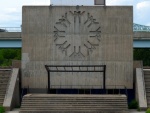 La Place des Nations
La Place des Nations
sur la pointe s... -
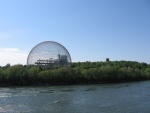 Le globe géodésique d
Le globe géodésique d
e Buckminster F... -
 Le globe géodésique d
Le globe géodésique d
e Buckminster q... -
 Le pavillon de l’Unio
Le pavillon de l’Unio
n Soviétique, c...
-
 Le Pavillon de la Fra
Le Pavillon de la Fra
nce -
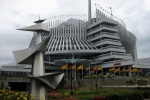 Le Pavillon de la Fra
Le Pavillon de la Fra
nce, qui est au... -
 Le Pavillon des États
Le Pavillon des États
-Unis -
 Le Pavillon du Canada
Le Pavillon du Canada
-
 Le Pavillon kaleidosc
Le Pavillon kaleidosc
ope -
 Le plan d’Expo 67 sur
Le plan d’Expo 67 sur
une carte post... -
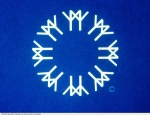 Logo, Expo 67
Logo, Expo 67
-
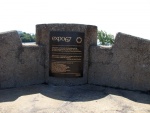 Plaque commémorant Ex
Plaque commémorant Ex
po 67 sur l’Île...

